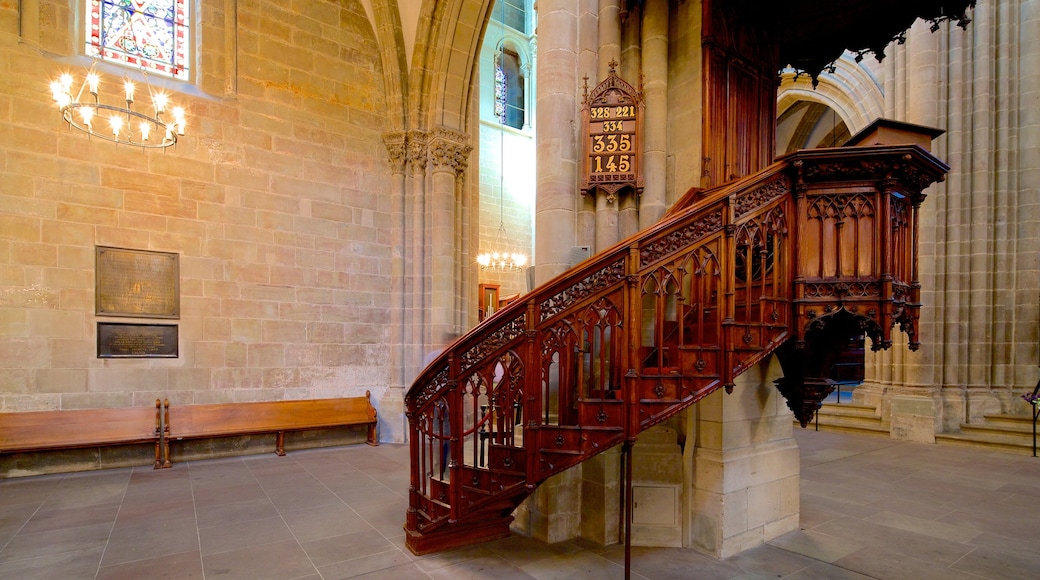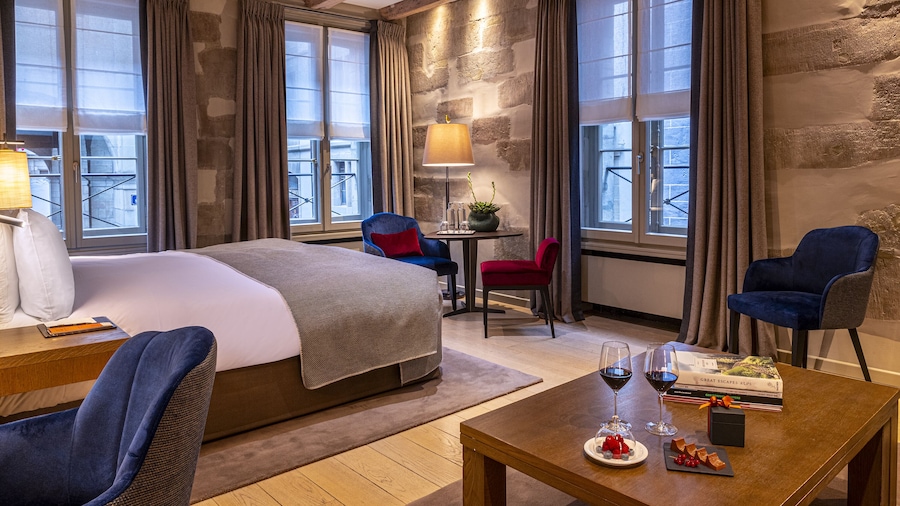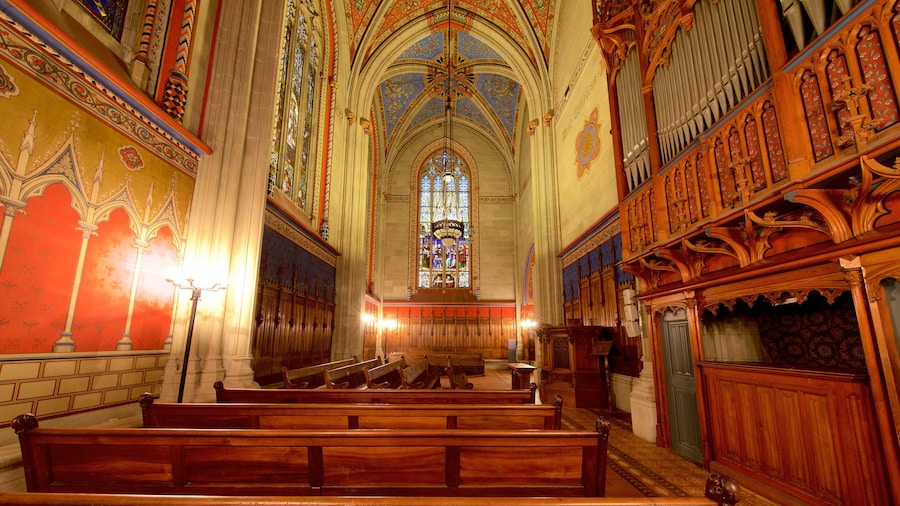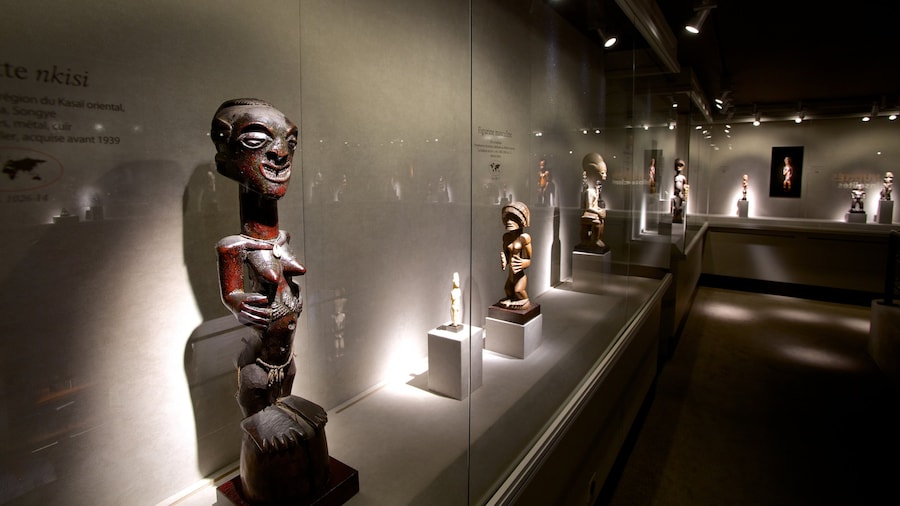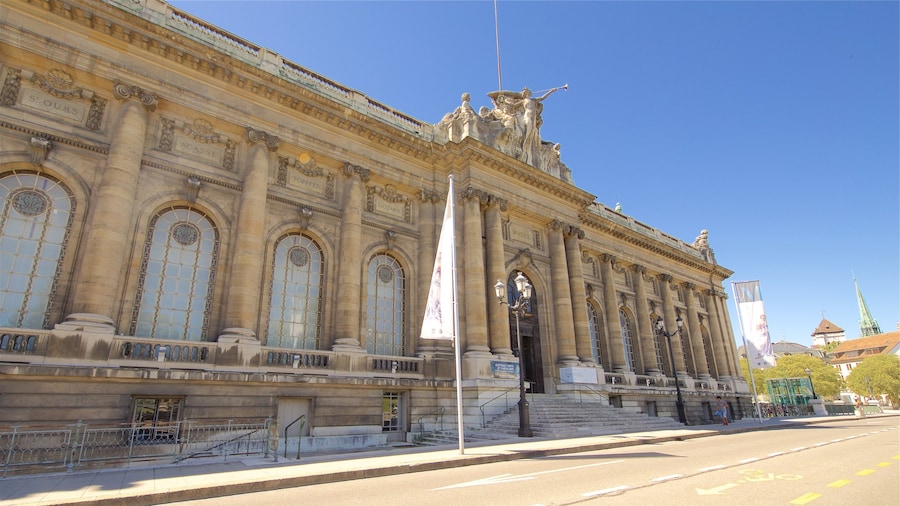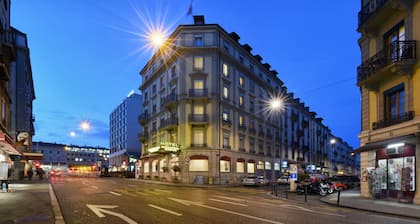Montez les tours de la cathédrale Saint-Pierre pour vous offrir une vue superbe sur la ville. Voyez l'endroit où le réformateur protestant Jean Calvin prononçait ses sermons, et visitez le site archéologique se trouvant sous l'édifice.
La cathédrale a été construite à la fin du XIIesiècle, en un endroit ayant accueilli plusieurs autres sanctuaires religieux par le passé. La cathédrale est devenue un lieu du culte protestant au XVIesiècle à l'époque de la Réforme. Elle a été reconstruite plusieurs fois, ce qui explique le mélange de styles architecturaux qu'elle revêt. Tentez de distinguer les différents styles lorsque vous examinerez l'extérieur de l'église. Le bâtiment principal arbore le style roman-gothique, tandis que les colonnes de sa façade sont néoclassiques. Les deux tours carrées à l'extrémité est sont si différentes du reste de la cathédrale qu'elles semblent faire partie d'un édifice complètement séparé.
Une bonne part de l'intérieur autrefois somptueux de la cathédrale a été dépouillé quand elle a été convertie en église protestante. Cependant, vous pouvez toujours voir quelques élégants chapiteaux romans dans la nef. Admirez l'une des autres caractéristiques ornementales de l'église, les stalles de chœur en bois sculpté, qui datent du XVesiècle. Elles ont survécu à la Réforme parce qu'elles se trouvaient dans un autre édifice à l'époque. Puis visitez la chapelle des Macchabées afin de voir ses fresques gothiques. Un des attraits majeurs de la cathédrale est la simple chaise en bois utilisé par Jean Calvin.
Montez l'étroit escalier en colimaçon qui mène au sommet des tours de la cathédrale. De là, vous pouvez profiter de la vue panoramique sur la ville, le lac Léman et les montagnes environnantes.
Explorez le sous-sol de la cathédrale pour découvrir les ruines souterraines. Un bon nombre de ces zones de fouilles datent du IVesiècle. Admirez les sols en mosaïque de la fin de l'Empire romain, les cellules de moines et le tombeau d'un chef allobroge.
Située au centre de la vieille ville, la cathédrale est facile d'accès grâce au système de transport public efficace de Genève.
L'intérieur de la cathédrale Saint-Pierre s'explore gratuitement, mais il y a des frais d'entrée pour le site archéologique et les tours. Le musée est ouvert tous les jours, sauf à certains jours fériés.
